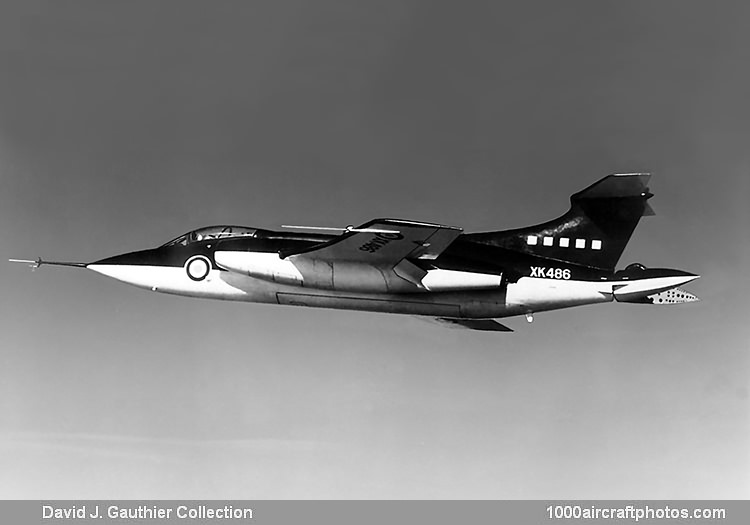02/28/2014. Remarks by Johan Visschedijk: "The Buccaneer was the world's first specially designed, low-level, high-speed strike aircraft. It was designed by B.P. Laight to Admiralty Specification N.A.39 issued for an entirely new carrier-borne weapons system: an aircraft which would be capable of delivering a nuclear weapon by exploiting the vulnerable gap beneath enemy radar defenses at a speed in excess of Mach 0.9. Blackburn Aircraft Co. Ltd. of Brough, East Yorkshire, UK, offered the Buccaneer, powered by two 7,100 lb (3,221 kg) st de Havilland Gyron Junior 101 turbojets.
The pictured prototype made its maiden flight at Boscombe Down on April 30, 1958, piloted by Lt. Cdr. Derek Whitehead, only thirty-three months after the initial contract had been placed. In July 1955 a pre-production batch of twenty Buccaneers had been ordered for development flying, and the first deck landing trials took place on board Victorious in June 1959. The fourth (the first with folding wings) and seventh pre-production aircraft (s/n XK489 and XK523) were used for these trials, during which 31 steam catapult launches and 31 arrested landings were completed.
In October 1959 an order for approximately fifty Buccaneer S.Mk.1 was placed, to follow directly after the completion of the pre-production contract.
In March 1961 six Buccaneers were delivered to No. 700Z Flight at RNAS Lossiemouth, the Intensive Flying Trials Unit commanded by Lt. Cdr. A.J. Leahy. In October 1961 the Admiralty announced that the first two operational squadrons of Buccaneers, Nos. 801 and 809, were to be formed at Lossiemouth in the summer of 1962. One squadron was to be embarked in the HMS Ark Royal and the other shore-based for a time to take part in anti-submarine exercises.
The unique electronic and weapons system of the Buccaneer enabled the two-man crew to carry out a planned operation of extreme accuracy using conventional or nuclear weapons, carried internally in fuselage on large rotating bomb door. Extensive incorporation of the area rule configuration delayed the drag rise, and boundary layer control by ejected supersonic air nearly doubled the lift and decreased the approach speed.
Steel fittings and components machined from the solid ensured the necessary fatigue strength for prolonged high-speed flight in the turbulent air near the ground. Weapons could be delivered by a conventional direct run over the target or by the newer 'toss bombing' technique, in which the weapon followed a ballistic trajectory to the target, by which time the aircraft was well away from the impact area.
The Buccaneer S.Mk.1 was followed by the more powerful Buccaneer S.Mk.2 with Rolls-Royce Spey engines, and a production order for this later version was announced in January 1962."
